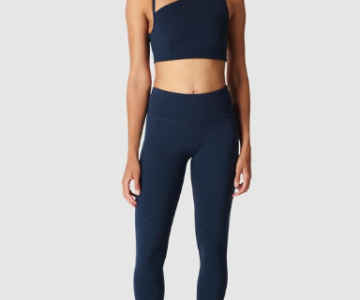Running in cold weather can be a challenge, but it’s also an opportunity to embrace the crisp air and stay active during the winter months. However, it’s important to be mindful of how the temperature can feel when you’re actually running, compared to what the weather forecast predicts. As you start your run, your body will warm up quickly, so you may end up too hot if you overdress. On the flip side, once you stop running, the cold will catch up with you fast, making it crucial to change out of wet clothes as soon as possible. Always have a dry set of clothes ready to put on, or, if possible, take a warm shower right after finishing your run.
Here are some essential pieces of gear to consider for cold-weather running:
- Running tights
- Long sleeve moisture-wicking shirts (you may need different weights depending on the severity of winter in your area)
- Running gloves or mittens
- Headband for ear protection
- A hat with a visor
- Windproof running jacket and pants
- Tech fabric or wool blend running socks
The key to staying comfortable while running in the cold is layering. Start with layers that keep you warm at the beginning of your run and then remove them as your body heats up. You can tie extra layers around your waist or leave them at a safe drop-off point, such as your car, during a loop run. Make sure to wear your base layer closest to your skin, so when you shed layers, the correct layers remain in place.
A good rule of thumb is to calculate your “running temperature” by adding 5 to 10 degrees Celsius to the outside temperature. Your clothing needs will also depend on factors like your body size, the intensity of your run, and the length of your workout.
For example, if you’re a smaller runner or going for a short, easy run, add 5 to 8 degrees Celsius to the outside temperature. However, if you’re doing a long run or a harder workout, or if you have a larger body mass, add 10 degrees to the outside temperature. If it’s 22 degrees outside, your running temperature will range from 27 to 30 degrees Celsius, depending on your run specifics.
Wind-chill is another factor to consider. Always check the “feels like” temperature to get a better idea of what you should wear. For instance, if it’s 22 degrees outside but the wind-chill makes it feel like 16 degrees, you’ll want to dress as if it’s between 21 and 26 degrees.
On windy days, plan your route so that you run into the wind at the start of your run and have it at your back for the return trip. This prevents you from getting chilled quickly after working up a sweat.
Here’s an informal guide to what you might wear based on the temperature ranges (in Celsius):
- 15+ degrees: Tank top and shorts (feels like 21 to 26 degrees)
- 10 to 15 degrees: Short sleeve tech shirt and shorts (feels like 15 to 26 degrees)
- 4 to 10 degrees: Long sleeve tech shirt, shorts or tights, gloves (optional), headband (optional) (feels like 10 to 20 degrees)
- -1 to 3 degrees: Long sleeve tech shirt, shorts or tights, gloves, headband (feels like 4 to 15 degrees)
- -6 to -1 degrees: Layered shirts (long sleeve with short sleeve or long sleeve shirt and jacket), tights, gloves, headband or hat (feels like -1 to 9 degrees)
When the temperature drops below freezing, it’s especially important to pay attention to local weather updates and advisories. Cold air can exacerbate certain health conditions, so trust your instincts and, if necessary, choose the gym over running outside.




